Potřebujeme váš souhlas k využití jednotlivých dat, aby se vám mimo jiné mohly ukazovat informace týkající se vašich zájmů. Souhlas udělíte kliknutím na tlačítko „OK“.
ASTM D2885-13
Standard Test Method for Determination of Octane Number of Spark-Ignition Engine Fuels by On-Line Direct Comparison Technique
Automaticky přeložený název:
Standardní zkušební metoda pro stanovení oktanové číslo paliv zážehového motoru spojením on-line přímé porovnání Technika
NORMA vydána dne 15.6.2013
Informace o normě:
Označení normy: ASTM D2885-13
Poznámka: NEPLATNÁ
Datum vydání normy: 15.6.2013
Kód zboží: NS-21838
Počet stran: 17
Přibližná hmotnost: 51 g (0.11 liber)
Země: Americká technická norma
Kategorie: Technické normy ASTM
Kategorie - podobné normy:
Anotace textu normy ASTM D2885-13 :
Keywords:
analytical measurement system, comparison reference fuel, delta octane number, stream sample fuel, ICS Number Code 75.160.20 (Liquid fuels)
Doplňující informace
| Significance and Use | ||||||||||||||||||||||||||||||
|
5.1 The delta octane number (ΔO.N.) measure can quantify the difference of in-line blended spark-ignition engine fuel or process stream material octane number to a desired octane number to aid in optimizing control of blender facilities or refinery process units. 5.2 The ΔO.N. measure, summed with a statistically sound comparison reference fuels O.N. provides either research or motor octane number value of the current in-line blended spark-ignition engine fuel or process stream material. 5.3 Through the use of cumulative flow-weighted averaging of the repetitive ΔO.N. results, a statistically significant octane number can be assigned to a tender or batch of in-line blended spark-ignition engine fuel. |
||||||||||||||||||||||||||||||
| 1. Scope | ||||||||||||||||||||||||||||||
|
1.1 This test method covers the quantitative online determination by direct comparison of the difference in knock rating or delta octane number of a stream sample of spark-ignition engine fuel from that of a comparison reference fuel. 1.2 This test method covers the methodology for obtaining an octane number using the measured delta octane number and the octane number of the comparison reference fuel. 1.3 The comparison reference fuel is required to be of essentially the same composition as the stream sample to be analyzed and can be a secondary fuel termed standard fuel or a tertiary fuel termed prototype fuel. 1.4 The test method utilizes a knock testing unit/automated analyzer system that incorporates computer control of a standardized single-cylinder, four-stroke cycle, variable compression ratio, carbureted, CFR engine with appropriate auxiliary equipment using either Test Method D2699 Research method or Test Method D2700 Motor method operating conditions. 1.4.1 Knock measurements are based on operation of both fuels at the specific fuel-air ratio that produces maximum knock intensity for that fuel. 1.4.2 Measured differences in knock intensity are scaled to provide a positive or negative delta octane number of the stream sample from the comparison reference fuel when the fuels are compared at the same compression ratio. 1.4.3 Measured differences in compression ratio are scaled to provide a positive or negative delta octane number of the stream sample from the comparison reference fuel when the fuels are compared at the same knock intensity. 1.5 This test method is limited to testing 78 to 102 octane number spark-ignition engine fuels using either research or motor method conditions. 1.6 The octane number difference between the stream sample and the applicable comparison reference fuel is self-limiting by specifications imposed upon the standard and prototype fuels. 1.7 Specifications for selection, preparation, storage, and dispensing of standard and prototype fuels are provided. Detailed procedures for determination of an appropriate assigned octane number for both standard and prototype fuels are also incorporated. 1.8 The values of operating conditions are stated in SI units and are considered standard. The values in parentheses are historical inch-pound units. The standardized CFR engine measurements continue to be expressed in inch-pound units only because of the extensive and expensive tooling that has been created for this equipment. 1.9 This standard does not
purport to address all of the safety concerns, if any, associated
with its use. It is the responsibility of the user of this standard
to establish appropriate safety and health practices and determine
the applicability of regulatory limitations prior to use.
Standard Practice for Determination of
Precision and Bias Data for Use in Test Methods for Petroleum
Products, Liquid Fuels, and Lubricants Standard Practice for Sampling and
Handling of Fuels for Volatility Measurement Standard Practice for Applying
Statistical Quality Assurance and Control Charting Techniques to
Evaluate Analytical Measurement System Performance (Includes all
amendments and changes 12/12/2023). Standard Specification for Automotive
Spark-Ignition Engine Fuel (Includes all amendments and changes
12/14/2023). Standard Practice for Automatic Sampling
of Petroleum and Petroleum Products (Includes all amendments and
changes 3/24/2023). Standard Terminology Relating to
Petroleum Products, Liquid Fuels, and Lubricants (Includes all
amendments and changes 12/21/2023). Standard Practice for Manual Sampling of
Petroleum and Petroleum Products Standard Specification for Reagent
Water Standard Test Method for Motor Octane
Number of Spark-Ignition Engine Fuel (Includes all amendments and
changes 1/17/2024). CFR F-1 & F-2 Octane Rating Units Operation &
Maintenance FORM 847 The sole source of supply of the apparatus
known to the committee at this time is Waukesha Engine Division,
Dresser Equipment Group, Inc., 1000 W. St. Paul Avenue, Waukesha,
WI 53188. Waukesha Engine Division also has CFR engine authorized
sales and service organizations in selected geographical areas. If
you are aware of alternative suppliers, please provide this
information to ASTM International Headquarters. Your comments will
receive careful consideration at a meeting of the responsible
technical committee, which you may attend. Standard Practice for Sampling of
Petroleum Products for Analysis by Process Stream Analyzers and for
Process Stream Analyzer System Validation Standard Practice for Use of the Terms
Precision and Bias in ASTM Test Methods Standard Terminology Relating to Quality
and Statistics (Includes all amendments and changes 4/21/2022). Standard Test Method for Research Octane
Number of Spark-Ignition Engine Fuel (Includes all amendments and
changes 1/17/2024). Standard Practice for Determining a
Flow-Proportioned Average Property Value (FPAPV) for a Collected
Batch of Process Stream Material Using Stream Analyzer Data |
Podobné normy:
Historická
1.12.2012
Historická
1.8.2010
Historická
1.6.2011
Historická
1.7.2010
Historická
1.5.2013
Historická
1.10.2011


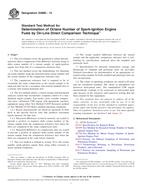
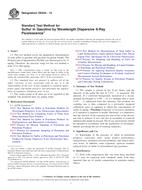 ASTM D6334-12
ASTM D6334-12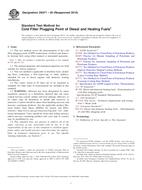 ASTM D6371-05(2010)..
ASTM D6371-05(2010)..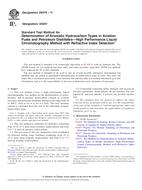 ASTM D6379-11
ASTM D6379-11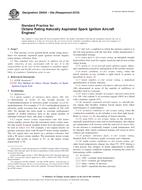 ASTM D6424-04a(2010)..
ASTM D6424-04a(2010).. ASTM D6584-13e1
ASTM D6584-13e1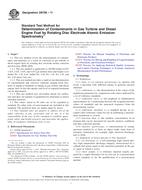 ASTM D6728-11
ASTM D6728-11
 Cookies
Cookies
